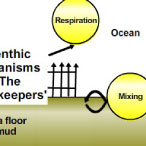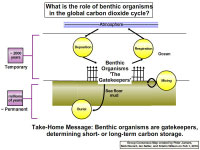|
|
Click Images to Enlarge
|
||||||||
About this Workshop:
For this workshop, 15 graduate students from UMaine and 2 post-doctoral researchers were matched with New England-region ocean and climate scientists to improve their collective understanding of Earth's major ocean - climate systems. [more]
About this Scientist:
Peter Jumars is a benthic physical ecologist in that he studies the interface between individual organisms and physical, chemical and geological processes. His interests extend to populations, communities and ecosystems, but are "unabashedly reductionist" and focused on mechanism.
Pete and his lab group strive to identify quantitative physical, chemical and geological constraints that can be measured or calculated in order to bound the rates of processes in which marine organisms participate. Current projects include effects of unsteady flows at low Reynolds numbers on phytoplankton, interactions between burrowing and digestion in deposit feeders with physical and chemical properties of sediments (with L. Mayer), and effects of organisms and their structures on propagation of sound in and near the seabed (with the idea of using sound to infer abundances, activity levels and behaviors). [more]













